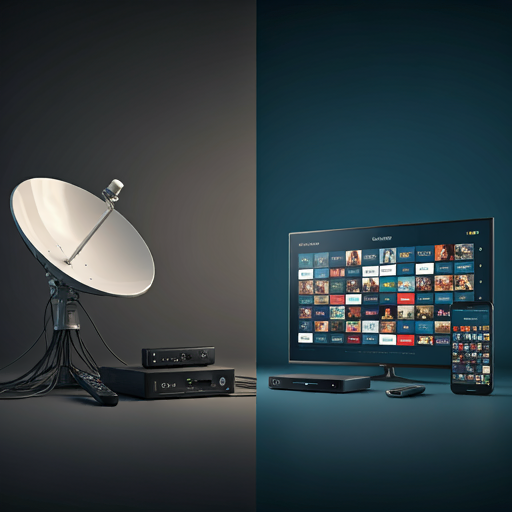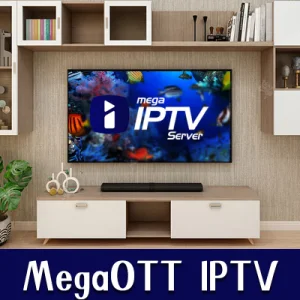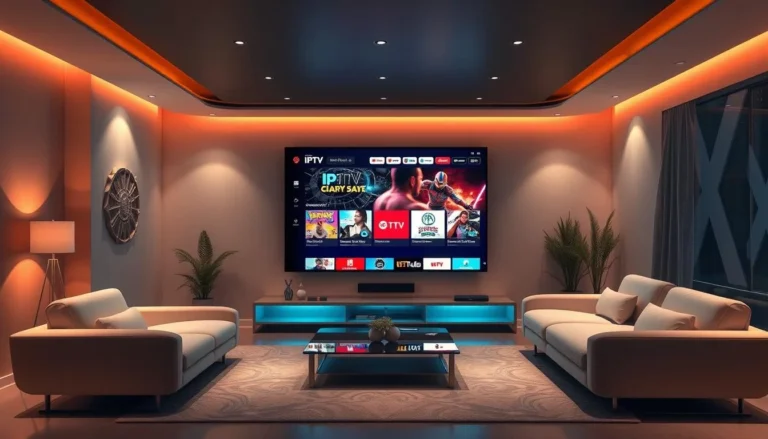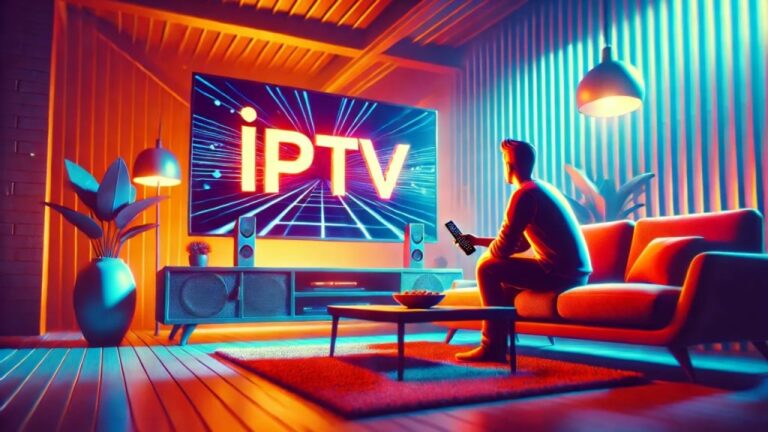Post Contents
The landscape of home entertainment has evolved rapidly over the past few decades. From the days of antenna-based broadcast TV to the rise of cable, satellite, and finally, streaming services, technological advancements have consistently reshaped how we consume content. As we stand on the precipice of a new era in entertainment, one platform seems poised to take center stage: MegaOTT.
MegaOTT services are revolutionizing how people access television and video content. Unlike traditional cable or satellite TV, which depend on a set infrastructure and equipment, OTT services leverage the internet to deliver content directly to users. The advent of MegaOTT has not just introduced new ways to watch but has fundamentally altered the entire entertainment ecosystem. This article explores why MegaOTT is the future of home entertainment, examining its technological advancements, flexibility, and future potential.
The Evolution of Entertainment: From Traditional TV to MegaOTT
Traditional TV: A Model in Decline
Traditional TV, which includes both cable and satellite services, was once the gold standard for home entertainment. Viewers had access to a broad range of channels, including specialized ones, all bundled into monthly subscription packages. However, with the advent of the internet and mobile technologies, the limitations of traditional TV began to show. Issues like rigid schedules, limited control over what content is available, and inflexibility in terms of viewing options started to alienate modern viewers.
Despite the initial growth of online video platforms like YouTube and Netflix, cable companies and satellite providers were slow to adapt to the changing landscape. Even when they did, their attempts at incorporating on-demand services or streaming apps often felt like afterthoughts rather than true innovations. The traditional TV model, built on the assumption of linear programming and fixed schedules, seemed increasingly out of touch with consumer expectations for flexibility, personalization, and accessibility.
The Emergence of MegaOTT: A New Paradigm

MegaOTT services emerged as the natural evolution of streaming technologies, promising a richer, more engaging experience for users. Unlike traditional cable, which relies on physical infrastructure and geographical constraints, MegaOTT is powered by the internet, enabling it to bypass many of the limitations of traditional TV. Through apps, smart TVs, or set-top boxes, viewers can access a vast library of content at any time, without being tied to a rigid programming schedule.
MegaOTT takes the flexibility of internet-based video streaming to new heights. With platforms such as Netflix, Hulu, Amazon Prime, and others, viewers can enjoy on-demand content that caters to a wide range of tastes and preferences. However, what truly sets MegaOTT apart is its integration of advanced technologies that are beginning to redefine how we interact with and consume entertainment. The benefits are clear: cost-effectiveness, personalized viewing experiences, flexibility, and a wide range of available content.
Technological Advancements: What Makes MegaOTT the Future?
1. IPTV Services: Breaking Boundaries
IPTV (Internet Protocol Television) is one of the core technologies behind MegaOTT services. Unlike traditional TV, which transmits signals via satellite or cable, IPTV uses the internet to deliver television programming. This allows users to stream content over a broadband connection, offering the possibility of accessing live TV, on-demand content, and even premium channels, all without the need for expensive set-top boxes or satellite dishes.
The biggest advantage of IPTV in the context of MegaOTT is its ability to combine the benefits of traditional TV with the flexibility and scalability of internet streaming. IPTV offers many of the same live TV channels that you might get through cable, but without the need for the cumbersome hardware and restrictive contracts. This “hybrid” approach to TV is more appealing to younger, tech-savvy audiences who expect on-demand access and the ability to watch content across multiple devices.
For example, through IPTV-enabled MegaOTT platforms, users can watch their favorite live sports, news, or events in real time, while also having access to a comprehensive library of on-demand movies, TV shows, and documentaries. The integration of IPTV into MegaOTT services not only makes the viewing experience more flexible but also more diverse, ensuring that users can tailor their entertainment choices to their preferences.
2. Mobile Adaptability: Entertainment on the Go

Another significant advancement that Mega OTT IPTV offers over traditional TV is its superior mobile adaptability. With the increasing reliance on smartphones and tablets, especially among younger audiences, the ability to watch content on mobile devices has become a critical factor in choosing a streaming platform. Mega platforms are designed to work seamlessly on a wide range of devices, including smartphones, laptops, tablets, smart TVs, and gaming consoles.
This adaptability means that entertainment is no longer confined to the living room or a stationary setup. Mega services allow viewers to take their favorite shows, movies, or even live TV events with them, whether they’re commuting, traveling, or just lounging on the go. For instance, platforms like Hulu and Netflix have long been mobile-friendly, with apps that sync across devices and let users continue watching from where they left off. The ability to control content across multiple devices—whether at home or outside—makes Mega IPTV a far more convenient and flexible option than traditional services.
3. Playlist Control: Curating Your Experience
One of the most appealing features of Mega services is the control users have over what they watch and when they watch it. Unlike traditional TV, which often forces viewers to follow a fixed programming schedule, MegaOTT platforms provide comprehensive playlist control. Viewers can choose from vast libraries of movies, shows, documentaries, and more, adding them to personal queues, playlists, or watchlists.
This control is not just limited to on-demand content; many Mega OTT platforms also allow users to customize their live TV experience. IPTV services, for example, enable viewers to create personalized channel lists or even integrate content from multiple providers into a single user interface. This degree of control is something traditional cable and satellite TV simply cannot match, as it gives users the freedom to curate their entertainment experience based on their preferences, not the network’s schedule.
Moreover, MegaOTT services are beginning to integrate AI-driven recommendations and dynamic playlists, making the experience even more personalized. As algorithms learn from users’ viewing habits, the platform suggests content that matches individual tastes, ensuring that there’s always something new to discover. Whether it’s suggesting the next episode of a binge-worthy series or offering movie recommendations based on past viewing history, OTT’s playlist control provides an intuitive, personalized entertainment experience.
Addressing Common Questions About MegaOTT’s Future
Will MegaOTT Replace Traditional TV Completely?
While MegaOTT is undeniably the future of home entertainment, it is unlikely that traditional TV will disappear entirely in the short term. However, the trend is clear: more and more viewers are shifting away from traditional cable and satellite services in favor of internet-based solutions. The flexibility, cost-effectiveness, and extensive content options offered by MegaOTT platforms are too compelling to ignore.
Moreover, as Mega OTT continues to innovate—integrating AI-driven recommendations, 4K streaming, and live TV services—it is only a matter of time before traditional TV becomes increasingly obsolete. Major networks and cable companies are already exploring how they can integrate their offerings into the OTT model, offering both traditional broadcasts and streaming content in a hybrid format. The future likely lies in a more integrated system where MegaOTT services coexist with traditional TV, but with the latter increasingly taking a back seat.
What Role Will AI Play in the Future of MegaOTT?
Artificial intelligence (AI) is already beginning to play a major role in shaping the future of Mega services, particularly when it comes to content discovery and recommendations. As AI technologies evolve, MegaOTT platforms are becoming smarter in understanding user preferences and tailoring content accordingly. AI-driven recommendation engines can analyze viewing patterns, social media activity, and even reviews to suggest movies and shows that a user is likely to enjoy.
This personalized approach to content discovery is one of the key reasons why Mega OTT has become so popular. With millions of titles available across platforms, the need for a smart recommendation system is critical to helping users navigate this vast sea of content. Additionally, as AI improves, we can expect MegaOTT platforms to become even more intuitive, learning from users’ tastes in real-time and adjusting recommendations on the fly.
Will MegaOTT Ever Be as Affordable as Traditional TV?
One of the key advantages of MegaOTT services is their affordability. Traditional cable and satellite TV subscriptions often come with hefty fees, equipment rentals, and hidden charges. OTT platforms, by contrast, offer flexible subscription plans that can be tailored to suit individual budgets. Whether you opt for an all-inclusive package, pay-per-view, or ad-supported free options, MegaOTT services are typically more affordable than traditional TV.
In the future, as competition in the IPTV Mega space continues to grow and more platforms enter the market, the price of subscriptions may continue to decrease. Additionally, new business models like ad-supported streaming or hybrid subscription options could further reduce costs, making MegaOTT a viable option for even more households.
Conclusion: MegaOTT as the Future of Home Entertainment
The future of home entertainment is undeniably digital, and MegaOTT is at the forefront of this revolution. With its technological advancements, including IPTV services, mobile adaptability, and playlist control, MegaOTT offers a far more flexible, personalized, and accessible entertainment experience than traditional TV. As AI continues to improve, MegaOTT platforms will only become smarter and more intuitive, providing users with an even richer, more customized entertainment journey.
As we move further into the digital age, it’s clear that Mega OTT is not just a passing trend but a fundamental shift in the way we consume media. Whether through smart recommendations, on-the-go viewing, or the ability to curate your entertainment, Mega has proven that it is, indeed, the future of home entertainment.











